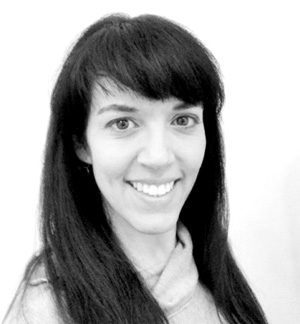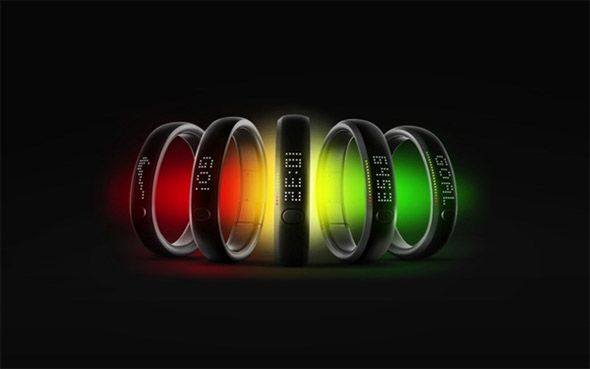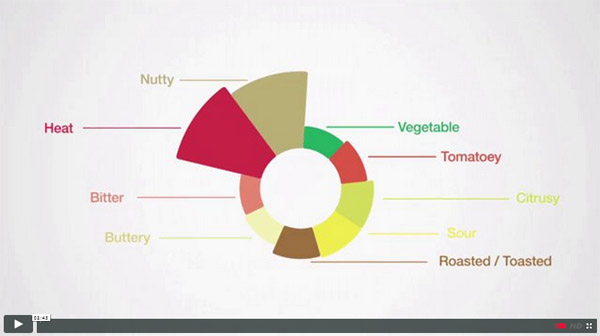How did you embark upon your career?
I come from a creative family. My grandmother is a self-taught artist and my mother is a fiber artist in Arizona. Ever since I can remember, I’ve been focused on doing things creatively – painting, knitting, sewing, photography, drawing – and all of that led me down a path to choose a career in design. I know a lot of people in our industry come from all sorts of backgrounds and I truly love that diversity, but all that I ever wanted to be was a designer.
Early on I was lucky to get a broad-based education at the University of Arizona. While I majored in graphic design, it was the courses that I took in literature, philosophy, and history that helped me round out my understanding of design in a social context. Sometimes I worry designers who limit themselves to just portfolio schools might miss out on that essential opportunity.
From there you could say I embarked on my career one job, one role, one client and one project at a time. In the 90s it was the era of the annual report and I spent countless hours with an X-acto knife doing paste up and old-school mechanicals. (I know I’m dating myself with that one.) As the Internet emerged, I spent a lot of time learning HTML and designing Web sites. And now, design has become so interactive and has such a strong social dimension to it, working at R/GA is perfect. I’ve been here for 14 years and it has really given me an opportunity to evolve my career by working with such an incredibly diverse group of truly talented people in a landscape that is constantly changing.
You lead R/GA’s 100-plus visual design team. Tell us about the rewards and challenges associated with managing other creatives.
The biggest reward for me is helping creative talent grow and do the impossible and the unexpected. There’s nothing more rewarding that working with, leading and managing talent when it does extraordinary things.
The biggest challenge? When it doesn’t.
I think it is also challenging sometimes to convince talented people to have patience, either with a client, a project or their own personal career development.
Tell us about some of the recent breakthrough work R/GA has masterminded for clients such as Nike, Samsung, L’Oreal, McCormick, and Beats by Dr. Dre.
I’m particularly excited about the recent work we’ve been doing out of our collective network (London, New York and San Francisco) with Beats by Dre. We’ve done several pieces across multiple channels, which really begins to round out a consistent and recognizable brand presence for them.
We started with a launch campaign for new product called “#ShowYourColor.” It was beautifully executed. The fans became part of the campaign itself. It resonated with people because it played to the core truths about the brand by leveraging the culture and fashion of music.
There was also some wonderfully produced television spots we worked on with them, this year called “Hear what you want.” which feature famous athletes using Beats by Dre headphones to cancel out the negative background noise around them as they ready themselves for competition. New versions continue to roll out and it’s exciting to see how the simple and inspiring storyline shines through.

Another area of work for us that never gets old (for me) is in the category of product development for Nike FuelBand. It’s been amazing to watch Nike deliver on the challenge of getting a broader base of people actively engaged with their product, by inventing a whole new category – using real time data for health and fitness. Creating a new measure for movement with “fuel” has opened up a lot of great challenges and opportunities. The work on evolving the platform is never done and it continues to be a great collaboration with them. We’re constantly improving the way the product works and figuring out new ways to influence and change consumer behaviors.
This is a great little overview from the launch in 2012 which helps explain the product and platform (for those that might not have seen it).
Not to be too Nike centric – but sometimes it can’t be helped. I love the work that we rolled out this past year in the category of Nike Skateboarding. For Nike, it’s always of utmost importance to be truly authentic and useful for it’s audience. Especially in this category, or you risk alienating them. We developed a process to capture video and document the details around mastering a variety of complex skateboarding tricks and pushed out an application to help fans learn the moves. I especially love the simplicity and breakdown of this tool. It’s intuitive and easy to use. We even engaged the phone’s accelerometer to help slow down or speed up the playback of the videos. Love that little detail.
I also love the complex ‘”trick tree” we data visualized to show the breadth and scope of the content available.
One additional piece of work I’d love to mention is FlavorPrint for McCormick. It’s an interesting piece we’ve collaborated on over the past couple years that uses data-driven brand design to allow users to categorize, understand and track their flavor preferences, inspiring them to break out of cooking habits and try new things. I think the marks developed through the system are quite wonderful to see animate and evolve as you continue to engage with the tool.
What do agencies need to do to retain female creative talent?
This is something that I think a lot about. And yet, I have to admit that I have mixed feelings about the whole “more women in advertising” discussion that normally takes place at conferences and on various panels in our industry. I never want to be selected for anything other than the merits of my work.
I think it’s a common feeling to have conflicting emotions on this topic. I read chef April Bloomfield’s Blood, Bones and Butter. Towards the end of the book, she’s invited to speak to a group of aspiring female chefs and, on the one hand, she’s simply admits, “I don’t know how we get more women in the kitchen … just cook really good food,” but as her panel discussion goes on, she realizes that this type of conversation is really important to have to let the young female chefs in the audience know that they can do it. They can own their own restaurants. They can be everything they want to be and they should expect no less.
That said, I also believe that as an industry our goal should not be just to retain female creative talent, but to retain creative talent. Period.
I do think for the most part our industry is full of fair-minded people who realize that we have a problem not only retaining female creative talent, but also helping and encouraging that female creative talent to grow into leadership positions.
From what I have observed, I think we have really strong talent at the junior level and our focus ought to be nurturing that talent so that it grows into senior level and executive level positions.
My solution, though, is a pretty simple one – each of us in leadership roles can make a difference by engaging with our female creative talent on a personal level on a case-by-case basis.
While the industry is doing a great job of raising awareness, I find the best approach to addressing this challenge is by focusing on individuals and taking time out to get involved in their career development.
It may be as simple as having a cup of coffee with a young creative and finding out how they feel, checking in on how their work is going, giving them advice and helping them learn how to figure out what is expected of them. I try to spend a lot of my time doing just that and am always surprised when I find out that one of my best, younger creative colleagues might be struggling to get her point across because she may be intimidated or may need guidance that she’s not getting.
I think each of us can make a real difference, one creative individual at a time.
What is your definition of success?
My idea of what I think success is has changed over time.
When I first got out of design school, success for me was something quite simple – it was making the world a more beautiful, memorable and legible place. I did that thing all designers do when they see something in their day-to-day activities that was designed incorrectly, or that was just flat-out ugly, or not as effective and beautiful as it could have been. I wanted to correct it, and make it better.
Today, I look at success a lot differently. Success for me is not as much on the surface or as two-dimensional as it once was. It is a lot deeper. That’s partly because the mediums have changed but it is also because over time I have changed.
It’s not about just a typeface or composition any more. On a design level, success has this added dimension of really having to make a client’s business better – that helps them solve a particular problem or do something innovative that helps them capture greater opportunity.
I’ve also found that for me as a designer I’ve come to feel that true success has to deliver something really useful for the user of a product or service. We all have products or engage in services that really frustrate us as users. I think the best measure of design success is when you create something that is just intuitive, works, removes frustration and is a delight to interact with.
As a manager of a large group of creatives, I realize that my creative medium is now sometimes people – it’s not about me doing the hands on work but about leading with larger concepts or solutions, and creating the right environment for my colleagues to do their best, most beautiful and most innovative work.
What kind of work would you like to do a) more and b) less of?
R/GA has been doing a lot of interesting work in the field of wearable tech, and I’m very interested to work on more projects that use these innovative technologies in one way or another. I also get excited thinking about where design can add value to everyday things – like interactive TV screens or smart car applications – where the design can be clunky but needs to be intuitive and user-friendly. Overall I’m very inspired by the general “Internet of Things” space.
As far as “less of” I’m not sure there is anything… everybody needs good design and everything is a challenge if you put your mind to it.
What has been your most fulfilling project to date?
Probably the first wave of Nike+ because that work led to FuelBand, which is a truly revolutionary use of technology and design. We put a lot of creative minds into the work and it showed in the end product. You can see the evolution of the product and brand though to today in its run tracking and data. That says something great about parts of the work that has that kind of longevity.
I also have a soft spot for a really old project, which was the first one that I worked on at R/GA some 14 years ago: the digital manifests for Ellis Island. At the time, the technology was pretty limiting, and looking back on it we could do it so much better now, but there was something very moving about working on a project that enabled people to see the actual manifests of their relatives when they first arrived in this country. Maybe it is just because you never forget your first.
Share with us the experiences, which have expanded your creativity the most.
The ones that make you the most uncomfortable – where you’re doing something in a medium you’ve never worked before. It may be a cliché but it’s true …what expands you is doing something you have no business doing, and inventing and figuring out things along the way – any situation where I’ve had to port my skills into a new medium and understand how to use them. It usually starts off very limited, but these limitations can create situations where you have to be the most creative
Also, I’ve appreciated working more closely with creative technologists. Opportunities to work in close collaboration can really expand your notion of what creativity can do because technology simultaneously limits what is possible and yet makes so many things actually possible.
How would you describe your design ethos?
I believe that design matters… and that means it matters for everyone. While it might be hip and cool to work on a project like Beats or Nike – believe me, it is – it is just as important and essential to work on projects for basic everyday consumer brands like a cell phone company or a financial services firm. If you are going to be a designer, then you design and do your best work for every client you have.
Design-wise, which recent campaigns do you admire?
Dumb ways to die. This launched around the end of 2012 and it’s one of those projects you just know people had fun working on. So amazingly simple, beautifully executed and crafted. These little illustrated characters make me smile and all parts of this campaign deliver on being truly delightful. It’s the kind of work that makes you wish you’d done it.
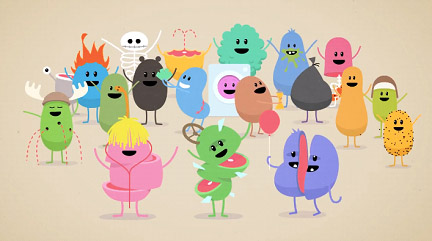
Chipotle. This is a great example of designed content that gives shape to the mission and direction a company is taking. It seems there are a lot more of these “manifesto” type pieces being done that serve the purpose of rallying a company internally as well as externally, wanting to put a stake in the ground to capture mindshare. A few of my colleagues found it a bit “preachy,” but I thought it was so well executed and designed I forgive it that.
I think even more than campaigns, I seem to hold onto impressions that great design of business and brand has on me. It can be hard to break through in the space these days – a level of good design is all over the place. A few companies that stick in my mind as of late are…
SquareSpace. This company is quite remarkable. I love the simplicity of their site and their positioning. They have managed to make simple site work so much better. What an amazing platform and toolset they’ve created. They aren’t the first out there to have done this, but they are the first to have done it so well and make it beautiful, intuitive and approachable. I really admire design that enables others to do great things.
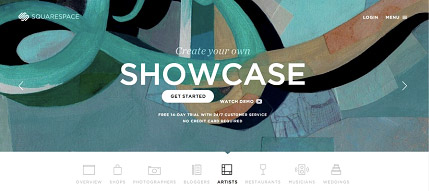
Shinola. I call this brand out not just because I was born outside of Detroit, but because I have huge respect and excitement for a company that reinvents and transforms people and places. I love the story of how they have re-trained their workforce from the factory and skilled trades of the area. The design is amazing. Every product is made and packaged with care and thought. No detail left undone. The Tribeca store is beautiful as well. I think this is a nice example of how design can save a place.





